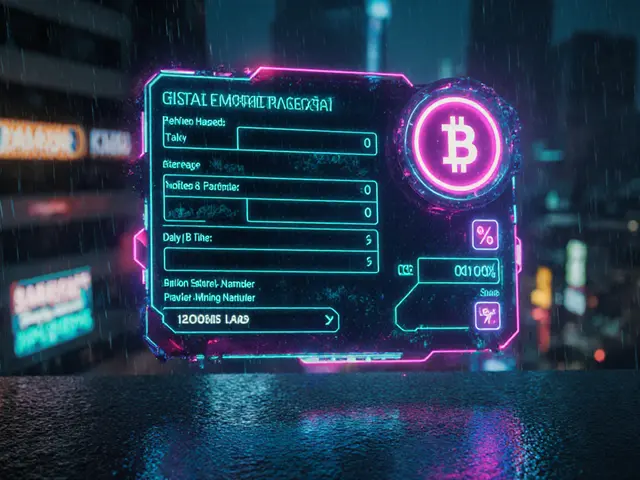Consensus Mechanism Explorer
Select a consensus mechanism below to learn how it prevents double-spending attacks:
Proof of Work (PoW)
Energy-based security model
Proof of Stake (PoS)
Collateral-based security model
Delegated PoS (DPoS)
Voting-based security model
How This Mechanism Prevents Double-Spending
Proof of Work uses computational puzzles to secure the network. Miners compete to solve complex mathematical problems, and the first to find a solution gets to add a new block. This makes it extremely expensive for an attacker to control more than 50% of the network's computing power.
To double-spend in a PoW network, an attacker would need over 51% of the total hash rate, requiring enormous hardware investments and electricity costs.
Key Features
- 1. Computational puzzle solving
- 2. Mining rewards for valid blocks
- 3. Economic cost of attack
Security Aspects
- ✓ High security against double-spending
- ✓ Requires significant resources
- ✗ High energy consumption
Consensus mechanisms are the set of rules that let a distributed ledger agree on a single version of truth without a central authority. In simple terms, they act like a crowd‑sourced referee that makes sure no one can cheat by spending the same digital token twice. This article walks through how those mechanisms lock out double-spending attacks, why the underlying blockchain architecture matters, and what trade‑offs each major algorithm brings.
Why Double‑Spending Is a Deal‑Breaker
Imagine you could copy a $10 bill and hand the same piece of paper to two different people. Traditional money avoids that problem because a central bank keeps a master ledger. In a permissionless network, there is no single keeper, so the protocol itself must guarantee that a token isn’t recorded twice. If the network fails at this, trust collapses and the currency becomes worthless.
How the Ledger Structure Helps
Every block bundles a batch of transactions and links to the previous block with a cryptographic hash. This chain‑of‑blocks creates an immutable history: changing a transaction in an old block would require recomputing all subsequent hashes. All nodes keep a copy of the ledger, so a mismatch is instantly spotted during the consensus process.
Proof of Work (PoW): Energy as a Barrier
In PoW, a miner solves a hard puzzle by brute‑force hashing. The first miner to find a valid nonce publishes the block, earning a reward. The puzzle’s difficulty scales so that the network collectively produces one block every few minutes. To double‑spend, an attacker would need >51% of the total hash power, which translates to billions of dollars in hardware and electricity. This economic cost is what makes PoW robust against fraud, albeit at a steep energy price.
Proof of Stake (PoS): Stake as Collateral
PoS selects a validator based on the amount of cryptocurrency they lock up as a bond. If a validator tries to approve a conflicting transaction, the protocol slashes (confiscates) part or all of that stake. The cost of an attack is therefore the market value of the required stake, often running into hundreds of millions for large networks. PoS also speeds up finality because blocks are confirmed in seconds rather than minutes.
Delegated Proof of Stake (DPoS): Voting Meets Economics
DPoS adds a democratic layer: token holders vote for a small set of delegates who produce blocks. Delegates can be voted out if they misbehave, and they also risk losing their own staked tokens. This dual pressure-community voting and financial penalty-creates a tight feedback loop that discourages double‑spending while keeping transaction throughput high.

Layered Defense: From Verification to Finality
When a transaction lands on the network, nodes first run a verification pass: they check that the inputs haven’t been spent before, that signatures are valid, and that the transaction follows protocol rules. Only after passing this check can the transaction be included in a block. Once a block is sealed, the network typically waits for multiple subsequent blocks-called confirmations-before considering the transaction immutable. Bitcoin, for example, recommends six confirmations for high‑value transfers, which reduces the probability of a successful double‑spending attack to near zero.
Comparing the Main Mechanisms
| Feature | Proof of Work | Proof of Stake | Delegated PoS |
|---|---|---|---|
| Primary Barrier | Computational cost | Staked collateral | Stake + community voting |
| Energy Use | High (e.g., Bitcoin ~ 120TWh/yr) | Low (Ethereum PoS < 0.01TWh/yr) | Low to moderate |
| 51% Attack Cost | Massive hardware + electricity | Acquire >50% of total stake | Control delegate set + >50% stake |
| Typical Confirmation Time | 10min per block (6 confirmations ≈ 1hr) | Seconds to minutes | Seconds |
| Centralization Risk | Mining pool concentration | Wealth concentration | Delegate collusion |
Hybrid Approaches: Best of Both Worlds
Hybrid models blend PoW’s brute‑force security with PoS’s economic incentives. Projects like Decred and Horizen run PoW for block creation while delegating governance and finality to PoS validators. This layered security makes it harder for an attacker to dominate both the hash power and the stake, raising the economic hurdle dramatically.
Real‑World Attack Scenarios
Successful 51% attacks are rare, but they highlight the underlying economics. In 2018, Bitcoin Gold suffered a double‑spending breach after attackers rented enough hash power to control the network for a short window, costing around $10million. PoS networks have witnessed “nothing‑at‑stake” attacks where validators sign conflicting blocks, but slashing mechanisms immediately penalize such behavior, making repeated attacks unprofitable.
Future Trends: Scaling Without Sacrificing Security
Layer‑2 solutions (e.g., Lightning Network) push most transactions off‑chain, settling only final balances on the main chain. While this improves speed, the base layer still needs robust consensus to guarantee that the final settlement can’t be double‑spent. Emerging research into sharding and quantum‑resistant cryptography aims to keep the verification step fast and secure even as transaction volumes explode.
Key Takeaways for Developers and Users
- Choose a network whose consensus mechanism matches your risk tolerance-PoW for maximal brute‑force security, PoS/DPoS for faster finality and lower energy footprints.
- Always wait for the recommended number of confirmations, especially for high‑value transfers.
- Watch for governance changes; a shift from PoW to PoS can alter the attack economics dramatically.

Frequently Asked Questions
Can a 51% attack happen on a PoS network?
Yes, but the attacker would need to own more than half of the total staked tokens. Since stakes are usually worth billions of dollars, the economic barrier is often higher than for PoW, where you’d need massive hardware and energy.
Why does Bitcoin require six confirmations?
Each new block adds another layer of security. After six blocks, the odds that an attacker could reorganize the chain drop below 0.1%, making a double‑spend practically impossible.
What is slashing in PoS?
Slashing is the automatic loss of a portion of a validator’s staked tokens when they act maliciously or go offline. It serves as a financial deterrent against double‑spending and other bad behavior.
Do hybrid consensus models eliminate all risks?
Hybrid models reduce many risks by requiring attackers to compromise both PoW and PoS layers, but they can still face governance challenges and added complexity that must be managed carefully.
How does DPoS handle a malicious delegate?
Token holders can vote the delegate out, and the protocol may slash the delegate’s own stake. This combination of community control and financial penalty keeps delegates honest.







Comments
19 Comments
Anthony R
Anthony R here; I must commend the thoroughness of this piece, indeed; the breakdown of PoW, PoS, and DPoS is quite illuminating, especially for newcomers. The diagrams, while not visible here, are presumably helpful, too. Still, one could argue that a deeper dive into hybrid models would reinforce the article's completeness. Overall, well‑structured and informative.
Vaishnavi Singh
Vaishnavi Singh reflects: the article elegantly captures the philosophical underpinnings of consensus, reminding us that trust is a social construct enforced by code. By framing double‑spending as a breach of communal faith, the narrative resonates on a deeper level. Still, a modest note on the trade‑offs between security and decentralisation would add nuance.
Linda Welch
Linda Welch writes: This article tries hard to sound technical but honestly it feels like a glorified brochure for the blockchain hype machine. The author pretends that PoW is the ultimate guardian while ignoring the environmental disaster it creates. Then they gush over PoS like it’s a magical silver bullet that will solve everything overnight. They claim staking is safe yet they ignore the fact that wealth concentration makes the whole system fragile. The DPoS section reads like a sales pitch for a voting system that gives power to a handful of elites. Nothing about the actual economics of attacks is discussed thoroughly. The piece also skips any mention of how mining pools already centralise PoW networks. And let’s not forget the 51% attacks that have already happened, which are brushed aside as rare anomalies. The writer seems to think that more charts will convince us, but charts don’t change the underlying problems. In short the article is a shallow overview that panders to newcomers without acknowledging the deeper systemic risks that come with each consensus model. It’s a classic case of selling the sizzle without the steak.
Kevin Fellows
Kevin Fellows: Keep it up, you're doing great!
meredith farmer
meredith farmer: It’s unsettling how easily we accept these mechanisms as immutable when, in reality, hidden actors could manipulate the delegate voting process. The article glosses over the fact that a small group of powerful validators might collude, undermining the promised decentralisation. One must remain vigilant and question who truly controls the consensus.
Peter Johansson
Peter Johansson: Great overview! 👍 I especially appreciate the clear comparison table – it really helps newcomers visualise the trade‑offs. Keep sharing these deep dives, they’re invaluable for the community. 🌍
Kyle Hidding
Kyle Hidding: The article’s treatment of consensus is riddled with oversimplifications; it fails to address the latency‑induced security drift in PoS and the orphan‑rate implications for PoW. Moreover, the jargon used is surface‑level, lacking the necessary depth about cryptoeconomic incentives and validator slashing parameters.
Andrea Tan
Andrea Tan: Nice summary, really clear and easy to follow. I especially liked the part about waiting for confirmations.
Gaurav Gautam
Gaurav Gautam: This piece does a solid job breaking down the mechanisms, and I love how it emphasizes both security and energy considerations. For anyone diving into blockchain, these insights are gold. Keep the momentum going!
Robert Eliason
Robert Eliason: ths articl is ok but could be bettr.
Cody Harrington
Cody Harrington: Agreed, the fundamentals are well‑covered; a bit more on hybrid models would round it out.
Ayaz Mudarris
Ayaz Mudarris: The exposition provided is commendably meticulous, delineating each consensus protocol with precision. It is particularly noteworthy how the author juxtaposes computational expense against economic deterrents, thereby illuminating the multifaceted nature of security. Nevertheless, a more exhaustive treatment of cross‑chain interoperability would enhance the discourse. In sum, the article serves as a valuable primer for both scholars and practitioners.
Irene Tien MD MSc
Irene Tien MD MSc: One cannot help but wonder whether the steady drumbeat of optimism surrounding consensus mechanisms is not merely a veneer, obscuring a deeper orchestration by unseen hands. The narrative paints PoW as a heroic sentinel while conveniently downplaying the shadowy alliances that perpetuate mining cartels. Likewise, PoS is heralded as a democratic marvel, yet the concentration of stake in the hands of a few raises unsettling parallels to oligarchic control. Such selective storytelling fuels a collective complacency, breeding a false sense of security while the underlying architecture remains vulnerable to manipulation. In this light, the article reads less as an objective analysis and more as a curated propaganda piece, designed to lull the masses into a comfortable illusion of invulnerability.
kishan kumar
kishan kumar: While the exposition is undeniably comprehensive, one must appreciate the subtleties of governance embedded within hybrid frameworks – a nuance often eclipsed by mainstream discourse. 😊
Aditya Raj Gontia
Aditya Raj Gontia: The content is decent, though it feels a bit surface‑level.
Kailey Shelton
Kailey Shelton: Agree, could use more depth.
Angela Yeager
Angela Yeager: Excellent breakdown of the mechanisms; the table especially clarifies the trade‑offs. For developers, the section on slashing in PoS is particularly useful.
vipin kumar
vipin kumar: Some readers might not realize that behind every consensus upgrade lies a network of vested interests, subtly steering the protocol direction.
Lara Cocchetti
Lara Cocchetti: If we continue to accept these mechanisms without questioning the power structures they uphold, we risk legitimising a new form of digital aristocracy that conflicts with the original ethos of decentralisation.
Write a comment